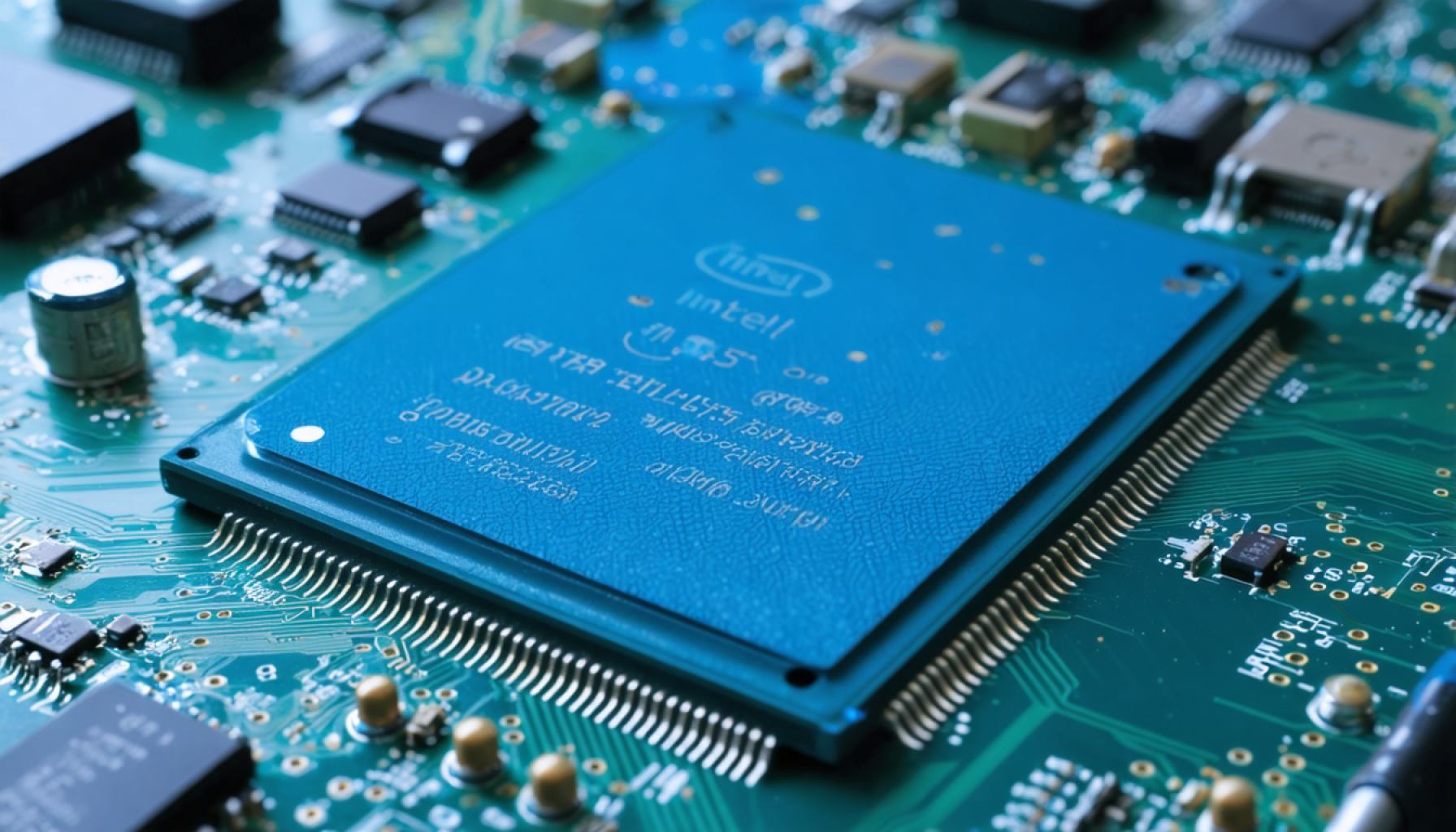- Intel is selling a majority stake in its Altera unit to Silver Lake as part of a strategy to focus on its x86 business and core operations.
- The sale values Altera at $8.75 billion, down from $16.7 billion in 2015, reflecting market changes and a decrease in its market share.
- Raghib Hussain, the new CEO of Altera, aims to boost innovation and competitiveness against rivals like Lattice Semiconductor.
- Proceeds from the sale will support Intel’s investment in advanced chip technology, despite potentially reducing long-term earnings.
- CEO Lip-Bu Tan’s strategy includes resizing spending, streamlining operations, and facing challenges in Intel’s core CPU and AI accelerator areas.
- Analysts predict a 26% increase in Intel’s stock, but maintain a “Hold” position due to competitive and operational concerns.
Intel is embarking on a bold transformation, steering its ship back to familiar waters under the leadership of CEO Lip-Bu Tan. The technology behemoth announced a pivotal decision to sell a majority stake in its Altera unit to Silver Lake, an influential investment firm. This strategic shift, part of a plan to revitalize Intel’s x86 business, is set to reinforce its core operations while potentially unlocking new avenues for growth.
In an era where technology evolves at lightning speed, this deal echoes Intel’s intent to double down on its foundational strengths. Altera, a maker of programmable chips known as FPGAs, will be handed a fresh start with a valuation of $8.75 billion, a sharp contrast to its $16.7 billion tag back in 2015. The decline reflects not only changes in market dynamics but also Altera’s waning market share, a drop from 38% to a mere 23%.
Yet, every cloud has a silver lining. Enter Raghib Hussain, the new CEO of Altera, who is poised to infuse innovation and competitive edge into the mix. His tech-savvy pedigree, honed at Marvell and Cavium, is likely to spearhead a renaissance in Altera’s product development, reigniting its potency in the face of stiff competition from rivals like Lattice Semiconductor.
For Intel, the financial jolt from Altera’s sale is set to fuel its investment juggernaut in cutting-edge chips, particularly the 18A and 14A nodes. This move is not without its consequences, however; the tech giant might experience a slight ding in long-term earnings, as FPGAs notoriously sport higher margins.
This reshuffling aligns with Tan’s vision of resizing spending and streamlining operations, ensuring every dollar is strategically allocated. Analysts remain cautious, maintaining a neutral stance given the looming shadows of competitive threats in Intel’s core x86 CPU domain, a noticeable void in its AI accelerator lineup, and lingering scale issues in the foundry business.
Intel’s shares are poised for a modest uptick, with analyst predictions suggesting a 26% gain in the foreseeable future. Yet, the consensus rests at a cautious “Hold,” reflecting a shared sentiment across the analyst community.
As Intel embarks on this transformative path, all eyes are on how effectively it can leverage its refocused strategy to reclaim its mantle in the semiconductor arena. For investors and tech enthusiasts alike, the unfolding narrative promises intriguing developments on the horizon.
Intel’s Strategic Maneuver: What It Means for the Future of Tech
Intel’s Transformation Strategy: Insights and Predictions
Intel is embarking on a strategic journey under CEO Lip-Bu Tan, marked by the sale of a majority stake in its Altera unit to investment firm Silver Lake. This move signals a noteworthy shift towards revitalizing Intel’s core x86 business, intending to balance its focus on its foundational strengths while exploring new growth opportunities.
Key Insights into Intel’s Transformation
1. Altera’s Sale and Market Valuation:
– Altera, Intel’s programmable chip unit, has been valued at $8.75 billion, down from its original tag of $16.7 billion in 2015. This decrease reflects shifting market dynamics and Altera’s reduced market share from 38% to 23%.
2. Leadership Change:
– Raghib Hussain, with a rich background from Marvell and Cavium, steps in as Altera’s CEO. His leadership is expected to reinvigorate Altera’s product development, challenging competitors like Lattice Semiconductor.
3. Investment in Advanced Nodes:
– The financial influx from the Altera sale will bolster Intel’s innovation in next-generation chips, focusing on the 18A and 14A nodes. This aligns with Intel’s strategy to enhance its technological edge.
4. Challenges and Competitive Landscape:
– Intel faces challenges in maintaining a competitive stance in the x86 CPU domain, accelerating its AI capabilities, and overcoming hurdles in the foundry sector. Analysts show cautious optimism with a “Hold” consensus.
Real-World Use Cases and Industry Trends
– FPGAs in Emerging Technologies: FPGA technology is critical in areas like AI, IoT, and 5G deployments. Altera’s evolution under Silver Lake could potentially harness these sectors, amplifying its market presence.
– Market Forecast and Growth: The global FPGA market is anticipated to grow significantly, driven by increased demand for high-performance computing in data centers and AI applications.
Pros and Cons Overview
Pros:
– Refined Focus: By selling Altera, Intel can streamline efforts on its x86 and AI advancements.
– Resource Allocation: Increased capital for investing in cutting-edge technologies.
– Industry Expertise: With Hussain at the helm, Altera might regain its competitive edge.
Cons:
– Reduced Earnings: Potential decrease in long-term profit due to divestiture of the high-margin FPGA business.
– Market Uncertainties: The tech industry’s competitive volatility poses risks to Intel’s transformation success.
Actionable Recommendations
1. Investment Consideration: Investors should monitor Intel’s stock for potential mid-term gains while maintaining a cautious outlook on market uncertainties.
2. Technology Focus: Tech enthusiasts should watch Intel’s development in advanced nodes and AI accelerators, as these areas are critical for future innovation.
3. Competitive Analysis: Follow Altera’s progress under Silver Lake to gauge its impact on the FPGA market.
For more updates and insights, visit Intel’s official site at Intel. Stay informed on technology trends and strategic movements in the semiconductor industry.
